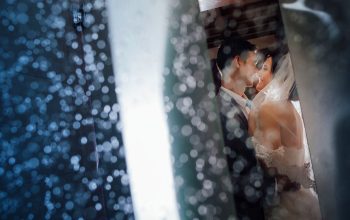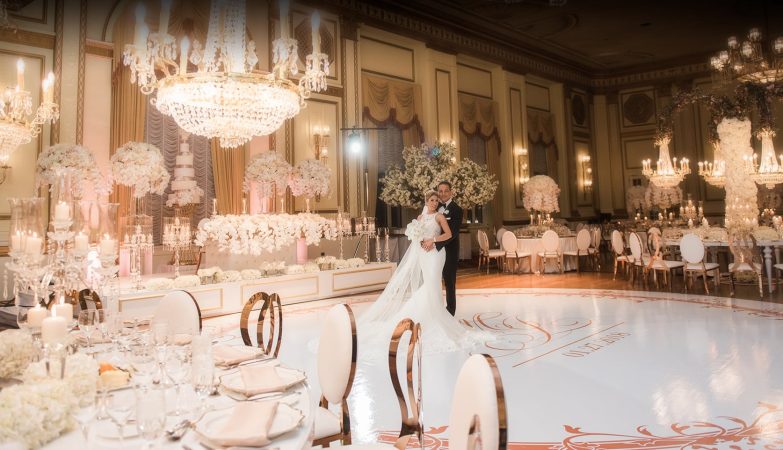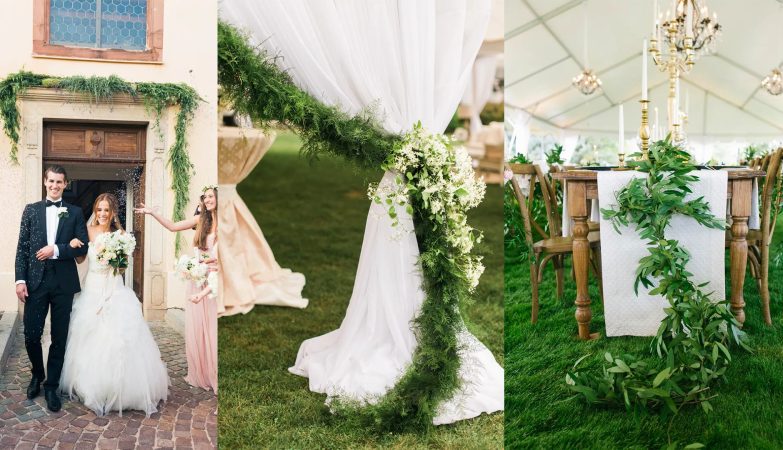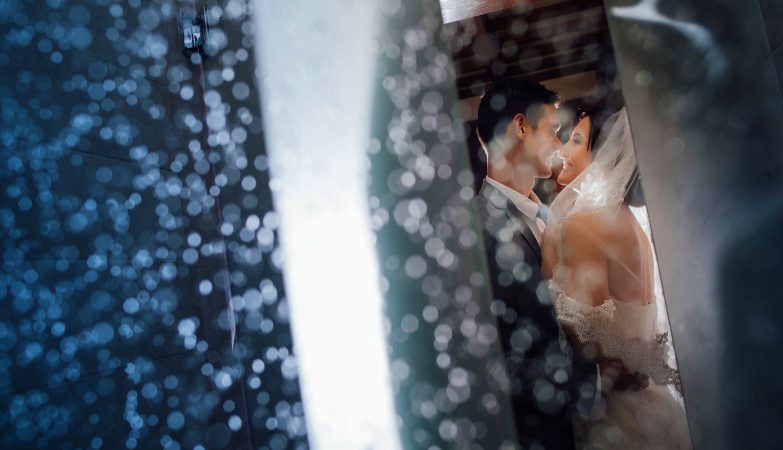
Understanding shape and form is one of the pillars of photography composition. It can make even the most mundane objects jump out of an image. Grab the object closest to you and run your fingers over the surface. Does the object have a texture? What about a shape? Are the edges rough or smooth? Straight or curved?
A photograph will teleport that same object into a two-dimensional world. But despite the absence of a sense of touch, a two-dimensional photograph can still manage to exemplify that object’s shape or texture. Shape and form make up half the classic design principles that apply to photography. But how can a simple shape, line, or form make an impact in your photography?
This article will take you through everything a photographer needs to know about shape and form in photography composition.
Classic Design Elements All Photographers Should Know
There are six classic art and design elements. Shape is our main focus in this article. But we’ll have a quick look at all six elements to better understand the broader design principles. All six elements are closely connected. So to get a deeper understanding of shape and form in photography, we will look at all six.
Shape
A shape is two-dimensional. Yes, a photograph itself is two-dimensional. But a shape in a photograph doesn’t have any depth. You can use lighting or perspective to give a two-dimensional shape depth. But once a sense of depth has been applied, a shape becomes a three-dimensional form.
Form
Objects with the appearance of depth are three-dimensional forms rather than shapes. So, despite being part of a two-dimensional image, the viewer can detect depth beyond the object’s front surface. Light and shadow give forms their depth. Or a change of perspective reveals the form’s angles and edges, rather than having a head-on view.
Line
Lines form the edges of shapes, but they also form shapes of their own. Lines can lead the eye in a photograph. And you can use lines to dissect and frame your photos. Lines serve as a powerful compositional tool in photography.
Pattern
When lines, shapes, or forms repeat, they create a pattern. Patterns can create a sense of calm. Or, when broken, patterns cause a feeling of unease.
Texture
Texture creates a sense of depth in a two-dimensional image. Texture in photography can also be accentuated by light and shadow.
Colour
Colour may not be among the geometrical design elements. But colour, and a lack of colour, is still important in design and photography. Colour can attract attention or stimulate our emotions.
The 4 Types Of Shape In Photography Composition

Shape in photography has several different elements. But these aren’t the shapes you learn in elementary school. In photography, we categorise shapes in a few different ways:
Geometric Shapes
Geometric shapes have straight, defined edges. They are comprised of clear and uniform angles and lines. You’ll often find geometric shapes in artificial structures, like buildings. And these shapes are often featured in abstract and architectural photography.
Organic Shapes
Organic shapes are full of curves and may not be geometrically perfect. They’re natural and non-uniform. We find organic shapes in nature. For example, you’ll find them in the curve of a tree branch or the shape of a flower petal.
Positive Shapes
A positive shape is what we think of first when we think of a shape. The object itself makes a positive shape. If we see the object, we see its positive shape.
Negative Space
Negative space is any area of the photo that isn’t occupied by the objects. Negative space could be a crack in a canyon wall, for example, or a shape created from the outline of two positive shapes.
10 Ways You Can Use Shape And Form In Photography Composition

All these concepts and ideas are interesting. But how do you put them into practice? The first step is to understand that the objects we see are made up of shapes, forms, and lines. Deconstructing images in this way will help you understand composition in photography. You can examine your own work, looking for shape and form in your photography. And you can study the work of other photographers to see how they use the form in photography.
The next step is to add these concepts to your photography. Here are a few tips for using shape and form in photography composition.
Use Shape And Form To Affect Mood In Your Photography

We know specific colours can awaken our emotions. But shapes and forms can also contribute to a photograph’s overall mood. Understanding how shape and form can contribute to a photograph’s mood gives you more tools to work with. You can find new ways of expressing emotions and telling stories.
Like circles and ovals, rounded shapes create a sense of movement because of the lack of corners and edges. Rounded forms relate to calmness and tranquillity. Squares and rectangles tend to create a feeling of stability. Straight lines have implications of assurance and strength. They also have a harsh quality that relates to stubbornness or anger. Triangles in photography direct the eye like an arrow. Flip the triangle upside down so that it’s resting on its point, and you signify a loss of balance. Irregular shapes, where sides are different lengths, can also create a tense and uneasy feeling in your photography.
Photographers can also use lines to influence the mood of their images. The direction of the line can determine the mood of the image. Diagonals appear to be going somewhere, so they create a feeling of movement and direction. Diagonal lines and shapes lead the eye in certain directions, depending on where they’re pointing. And a leading diagonal line that heads into the distance will give a photograph a sense of depth. A vertical line tends to build a feeling of strength and stability. A horizontal line, on the other hand, is associated with a calm or peaceful image. A distant horizon line of the sea is a great example. Curved lines will create a similar feel as circles and ovals, building a sense of motion. Curved lines create organic shapes, which have more natural and peaceful connotations.
Manipulate Shape And Form In Photography

You can’t always change the shape of the objects in your images. You can scrunch a piece of paper into a ball. Or you can slice an apple in half. But it’s much harder to round the edges of a square block of concrete.
That doesn’t mean you can’t change the role of shape and form in photography. For example, you could photograph the broadside of a barn to create a rectangular shape. Or you can change your perspective to manipulate the shape of the same barn. You can stand at a corner, create diagonal lines, and elongate the shape.
You can photograph a ball as a solid, round shape by backlighting it. Or you can use side-lighting to give the form more depth. You can also use this technique to change the round shape into a crescent using light and shadow. This is what happens with sunlight on the moon.
Find Different Shapes And Forms By Playing With Perspective

From different angles, a 3D form will appear to take on different shapes. A coffee mug, when viewed from the side, is a cylinder. That same cup, viewed from above, is a perfect circle. Adjusting your perspective can change the shape of many objects.
Explore the object from every angle. Find the shape that intrigues you the most or the shape that creates the mood you are looking for. Again, perspective allows you to choose between photographing a shape or a form. Shoot straight on for a shape. Or move until you can see multiple sides at once for a sense of depth.
Use Light To Add Three Dimensions

The second way photographers can turn shapes into three-dimensional forms is with light. If you want to emphasise shape, place the light directly in front or behind the subject. That will create either a silhouette or a front-lit shape.
If you want to show a three-dimensional form, move the light to hit the subject at an angle. The side lighting will create shadows that show our brain that a subject is a 3D form.
Use Focal Length To Play With Shape And Form

The lens you use plays a significant role in how shapes appear in your image. For example, wide-angle lenses tend to distort straight lines. And tilt-shift lenses correct that distortion. But lens choice goes beyond the distortion. The focal length of the lens will either amplify distance or minimise it. Wide-angle lenses make the distance between objects appear larger than they really are. A telephoto lens makes different shapes appear closer together. If you want two objects to look closer together without moving the objects, use a longer lens. To create more distance, use a wider lens.
When working with form, the same concept applies to parts of the same object. If the form includes parts closer to the camera, a wide-angle lens will make that distance appear much longer. And a telephoto lens will minimise that distance.
Use Lines In Your Photography Composition

Shapes and forms are strong compositional tools in photography. But a single line can also be a helpful tool when it comes to composition. You can look for lines in the same way you look for shapes. Look for lines that could lead the eye towards the subject. Learn to spot straight lines that go into the distance and create depth. Lines can create textures. And groups of lines can create new shapes. Change your perspective to give the lines a new axis. This can help change the lines’ purpose in your photography.
Think about what you want your image to say. Are you looking for shapes or lines? If you’re unsure, simplify your photos. Experiment with abstract photography, shooting basic shapes and lines.
Look For Multiple Shapes To Create Patterns

Chances are, you’re not photographing a single shape on an empty background. Be conscious of the shape repeating itself. Or perhaps the shapes echo in different areas of the shot. You can use repeated shapes to create patterns in your photographs. They can be abstract patterns. Or the patterns can lead the eye or create illusions.
Look for shapes that contrast with each other. You might find different kinds of geometric shapes. Or your can contrast geometric and organic shapes. Your compositional skills will improve when you start looking for shapes in photography. You can begin with minimalist shots. And you’ll be able to apply the skills you develop to different areas of photography.
Look For Negative Shapes

Negative shapes aren’t as common because they are harder to spot. But that doesn’t mean you should ignore them entirely. When the empty space between two objects creates a recognisable shape, it can make a strong composition. And a negative shape can often have a more significant impact than a positive shape.
When you’re looking at shape and form, take note of the space between the objects. What shapes can you find in those areas?
Find Balance In Your Composition

Think about how shape and form influence your photographs? Are they a small part of the image? Or do they fill the entire photo? Balance is all about what space you leave around the shapes. You can have sparse, minimalist compositions focusing on the shapes in photography. Or you can use shapes and forms in photography to build more complex images. Experiment by zooming in or switching to a wide-angle lens. How does the feel of that shape change? A wide-angle shot of a simple geometric shape can create a sense of minimalism. Or you can try a close-up of the shape to bring out the texture or strengthen the lines.
Balance can help determine the aspects of a shape that draws the viewer’s attention. For example, to exaggerate the perfectly spaced shape in a piece of architecture, try leaving space around the object. You can leave space that is equal to the size of the object. Or you can use more negative space. Build on the emotion of a curvy form by using the rule of thirds. Or exaggerate a shape’s perfect symmetry by centring the composition.
Harness The Power Of Triangles

Every shape has a role in photography. But triangles are one of the most powerful shapes in photography. They create a point that leads the eye. And they can direct the viewer or draw their attention to a specific point. Because of that movement, portrait experts often suggest posing a group of people into a triangular. It encourages the eye to move through the entire group.
You can find triangles in geometric or organic spaces. And they can be brought together to create three-dimensional forms in photography, such as pyramids.
shape in photography: an example of using triangles to lead the viewer’s eye towards a point
Conclusion

In everyday life, we tend to see things for what they are. But as photographers, we need to change the way we see the world. We need to look more carefully at shape and form. We can look a little deeper to see what shapes and forms make up the world we see.
The composition will always be influenced by what inspires you as an individual. But learning how to use shape and form in photography can help you develop your compositional style. Shape and form in photography are essential parts of image composition. Once you understand the shapes and forms that build the world around us, you can construct powerful photographs.
originally posted on expertphotography.com by Hillary Grigonis






